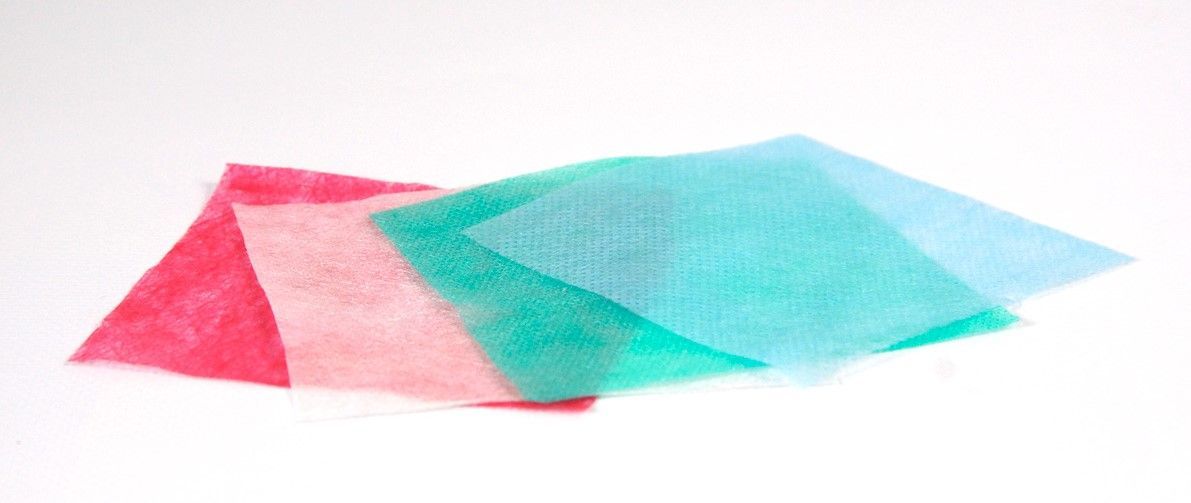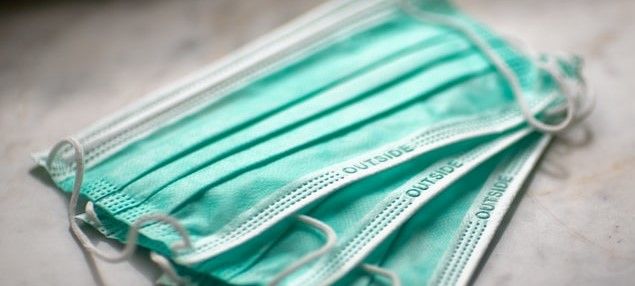With a second wave of coronavirus infections spreading across Europe, people are once again reaching for masks as they try to stop themselves and their families from getting sick.
But while most people are wearing just a simple piece of cloth across their faces, researchers in America and the Czech Republic have found ways to improve masks by using either chemicals or nanomaterials.

The two teams have found completely different approaches to making better masks, but both had the same goal in mind, to kill or deactivate the virus before it can escape into the air.
A Chemical Approach to Better Masks
Researchers from Northwestern University in Illinois have added anti-viral chemicals to standard masks made with non-woven fabrics. Their goal is to deactivate the virus while it is in the water droplets that may escape from the mask.
In this way, should another person then breathe in any airborne water droplets from the mask wearer, the virus inside will already be dead.

“Masks are perhaps the most important component of the personal protective equipment (PPE) needed to fight a pandemic,” said the study’s lead author, Jiaxing Huang. “We quickly realized that a mask not only protects the person wearing it, but much more importantly, it protects others from being exposed to the droplets (and germs) released by the wearer.”
The work has now been published in the journal Matter, although the university press release describes how, “… Huang and his team selected two well-known antiviral chemicals: phosphoric acid and copper salt. These non-volatile chemicals were appealing because neither can be vaporized and then potentially inhaled. And both create a local chemical environment that is unfavorable for viruses.”
To attach the chemicals to a standard cloth face mask was not as straight forward as a simple spray or dip. Instead, the team grew a “layer of a conducting polymer polyaniline on the surface”.
Not only did this strongly adhere to the mask fibres but is also formed “reservoirs for acid and copper salts.”
Tests showed that, “… even loose fabrics with low-fiber packing densities of about 11%, such as medical gauze, still altered 28% of exhaled respiratory droplets by volume. For tighter fabrics, such as lint-free wipes (the type of fabrics typically used in the lab for cleaning), 82% of respiratory droplets were modified.”
“Virus structures are actually very delicate and ‘brittle’. “If any part of the virus malfunctions, then it loses the ability to infect.” explains Huang.
Moving forward, Huang and the team hopes that other researchers will look to improve the design, experimenting with chemical formulations to make better masks.
A Nanomaterial Approach to Better Masks
Researchers in the Czech Republic have developed a process for adding nanoparticles that kill bacteria and viruses into the fabric used to make face masks.
Made by Prague-based raw material supplier AG CHEMI GROUP (who sponsor this webpage), the nanofabric is called NANO AB PP-25, and according to the company’s CEO Igor Sevcenko, have, “… active bactericidal effects, killing 99.99% of all known bacteria and virus.”

Made with nanoparticles of copper, zinc, silver, gold, and cerium, the process can be applied to both natural and synthetic fibres to create textiles that have been proven to kill 850 different species of bacteria and virus. While tests are ongoing to discover its effectiveness against SARS-COV-2, the researchers are confident that it will play a key role in combating the spread of infections and make for a safer world.
While the current goal is to use the nanotechnology to improve mask design, the nanofabric could also be used to make hospital gowns, bed linen, pillowcases, textiles for seats in all public spaces, tablecloths in restaurants, and cleaning cloths in kitchens.
This gives the nanoprocess great potential not only during the pandemic, but as a cleaner fabric for everywhere.

The coronavirus is a particularly virulent transmitter. Its ability to move unseen from one person’s exhale into another person inhale is at the core of what makes it so deadly.
While science continues to look for a vaccine, which may take years, it is good to see that other researchers and businesses are finding other ways of keeping us healthy.
Face masks may be a necessary evil of the pandemic, but they are a key to avoiding infection. The chemical industry and nanoparticle producers may have now made them an even more useful tool.
Photo credit: Unsplash, Vera Davidova on Unsplash, Mika Baumeister on Unsplash, & Northwestern University, AG CHEMI GROUP